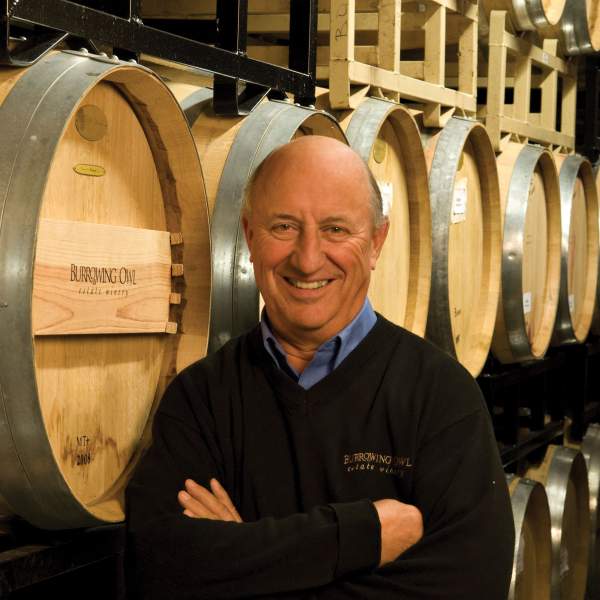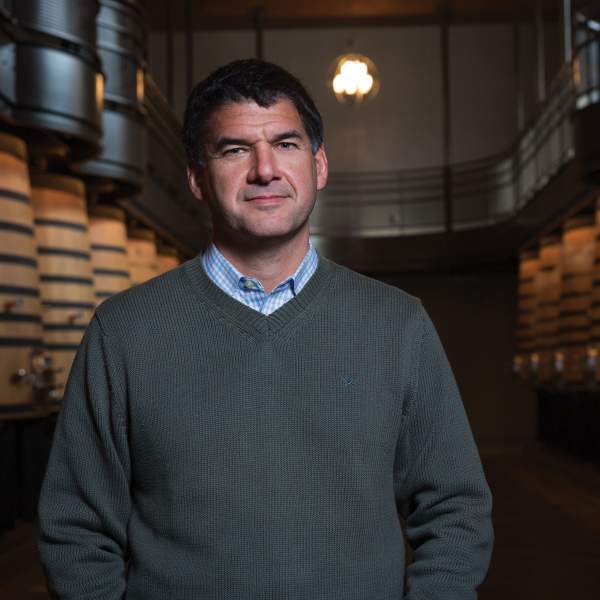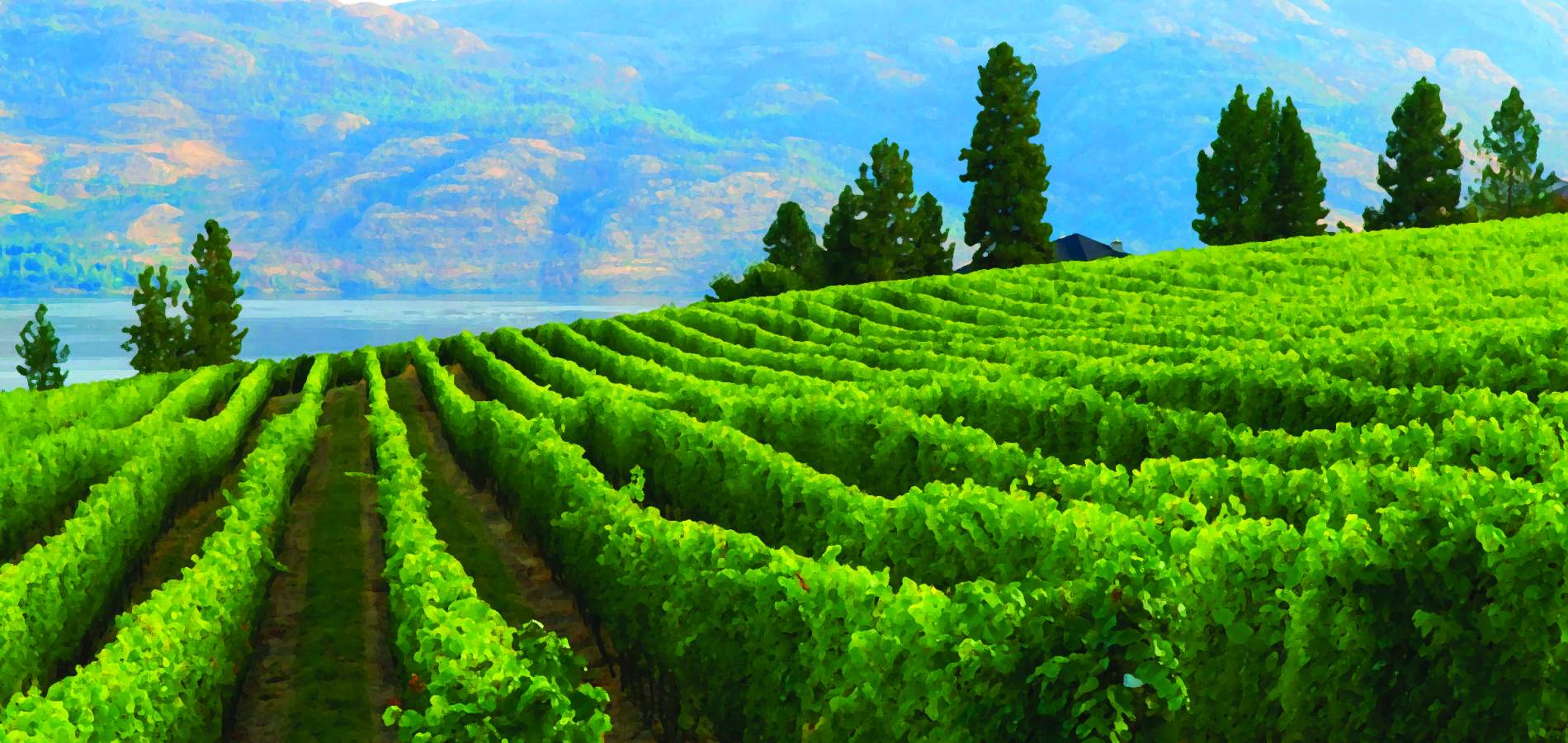By Ken Rivadeneira
These Okanagan Valley Vintners Are Raising The Bar For Canadian Wines
If you were to ask sommeliers in 2021 which wine region they’re most excited about, there’s a good chance many would single out British Columbia’s Okanagan Valley. Long overlooked by oenophiles, this narrow area surrounding the stunning Okanagan Lake has been turning heads as of late by producing world-class wines that rival even esteemed Burgundies—and its popularity is about to explode.
Though grape-growing and winemaking in the Okanagan date back to the 19th century, its quality fell well beneath most connoisseurs’ expectations until relatively recently. At best, oenophiles regarded it as passable table wine; at worst, undrinkable. It was not until the early ’80s when experimentation with old-world vinis vitifera vines and different varietals began in earnest in this area, which enjoys numerous microclimates and rich soil diversity.
Comparisons abound to Napa Valley in the ’70s or Oregon’s Willamette Valley in the ’90s in terms of the energy and potential to be the next “It” region. Over the last decade, more ambitious and experienced vintners have raised the bar here, dabbling with various techniques and grapes—and obtaining eyebrow-raising results. Meet three of the vintners and wineries that are charting the future of this region.

Jim Wyse
Burrowing Owl Estate Winery
burrowingowlwine.ca
“The whole idea was not to make a winery, just to grow grapes and sell them,” says Jim Wyse when looking back on how he founded Burrowing Owl Estate in 1993. Formally trained as an engineer whose primary business was real estate development in Vancouver, Wyse purchased a vineyard in Oliver that he saw for sale in the newspaper, and expected to enjoy a tidy profit from grape sales. “This was going to be a fun thing,” he recalls. He replanted the vineyard with European vines and had relative success as a grape grower. But when he noticed that the local prize-winning wineries were all producing wine with his grapes, “that gave us a pretty good clue that we had a good raw material.” In 1997, he officially became a vintner.
Today, Burrowing Owl is a family-run business, with Wyse’s children leading the executive team. Besides being one of the Okanagan Valley’s leading premium wineries, Burrowing Owl is also distinguished by its focus on environmentally sustainable practices—a passion born out of Wyse’s background as an engineer. Designed on three levels, the gravity-flow cellar uses substantially less electricity than traditional wineries to move grapes and keep the wine cool underground. The estate also implements extensive use of solar energy, with two buildings achieving a net-zero carbon footprint. “If we can show leadership or set an example, then that’s a good thing,” Wyse says.
Personal favorite wine:
2017 Meritage, Burrowing Owl’s flagship wine, a red blend of 59% cabernet sauvignon, 20% merlot, 18% cabernet franc and 3% petit verdot.
“I think the blends bring out the best,” Wyse says.

Santiago Cilley
Phantom Creek Estates
phantomcreekestates.com
“Go big or go home” seems to be the mantra behind Phantom Creek Estates, the latest estate winery to debut in the Okanagan Valley. With Santiago Cilley at the helm as CEO and general manager, this ambitious project located in Oliver—estimated to have cost more than $100 million—opened in the summer of 2020, and potentially offers a glimpse of the Okanagan Valley’s future. In addition to developing its award-winning organic and biodynamic wines with big industry talent like Philippe Melka and Olivier Humbrecht, Phantom Creek will eventually offer an extensive culinary and artistic program with a restaurant that will open in April 2021 as well as a 500-seat outdoor amphitheater.
“There’s a very unique energy here that I haven’t seen in any other place,” remarks Cilley. The Argentine-born wine industry veteran led strategic winemaking projects in California and Chile before taking over the reins of Phantom Creek, and he is quick to point out the uniqueness of the Okanagan Valley. “There is a certain Okanagan style. I would put it between Napa and Bordeaux,” he explains. While every producer has their own process and terroir varies tremendously in the valley, the region’s output “has very distinct markers of acidity and ripeness—a very balanced combination I haven’t seen anywhere else.”
And at the end of the day, it’s this excellence that visitors, producers, and consumers are all after in wines. “It’s a small valley. The growth is going to be in terms of quality, not volume.”
Personal favorite wine:
2017 Phantom Creek Vineyard Cuvée, a red blend of mostly cabernet sauvignon and petit verdot, which are not traditional to Canada.
“It’s always good to demystify our perceptions,” says Cilley. “This wine does that very well.”

Darryl Brooker
Mission Hill Family Estate
missionhillwinery.com
Like many people, Australian native Darryl Brooker had never considered British Columbia—or Canada in general—a serious winemaking region. “All I knew of Canada was ice wine,” he recalls. Brooker worked in Australia’s Barossa Valley and Hawke’s Bay in New Zealand before coming to Canada 17 years ago on a lark. “I got into the Canadian wine industry just as things were starting to change and people were focusing on quality and what it could be.” After a stint in Ontario, he arrived in the Okanagan Valley in 2010.
“It was quite exciting to arrive in a region that had all this potential that hadn’t been realized yet. And it still is not all realized by any means,” says Brooker, who now heads one of the region’s oldest and most architecturally impressive wineries, Mission Hill Family Estate, as president and chief winemaker. Founded in 1981 by entrepreneur Anthony Von Mandl, Mission Hill has some of the oldest old-world vines in Okanagan, allowing for the production of some truly elegant and collectible wines. “Winemaking is a game of inches,” Brooker says, “you never make this big leap in one year—it’s just continually building and building on top of what you did the year before.”
In the last five years, the vineyards have been converted to fully organic, which Brooker credits for improving the quality. Global expertise and investment have helped elevate the wines here, but “vineyards that are planted are getting older as well,” he says. “When you’ve got 30- and 40-year old vineyards you can do a lot more.” (
Personal favorite wine:
Mission Hill 2018 Vista’s Edge Cabernet Franc.
“It’s the best representation of the Okanagan Valley,” Brooker says.
How to Visit
The remoteness of the Okanagan Valley—a four- to five-hour drive east of Vancouver—may help it retain much of its character, but for AirSprint Fractional Owners it’s easy to visit this unique slice of British Columbia. Airports in Penticton and Kelowna give you convenient access to every area of the valley.
While wine discovery is one of the biggest reasons to visit the Okanagan, it’s far from the only one. The pristine Okanagan Lake, surrounded by mountains and rolling hills, is an ideal spring and summertime destination. Hotels and guest houses dot the valley, providing access to extraordinary opportunities for hiking, mountain and water sports, spa retreats, golf and tennis, birdwatching, outdoor concerts, and even Formula 1 racecar driving at Area 27 Motorsports Park.
